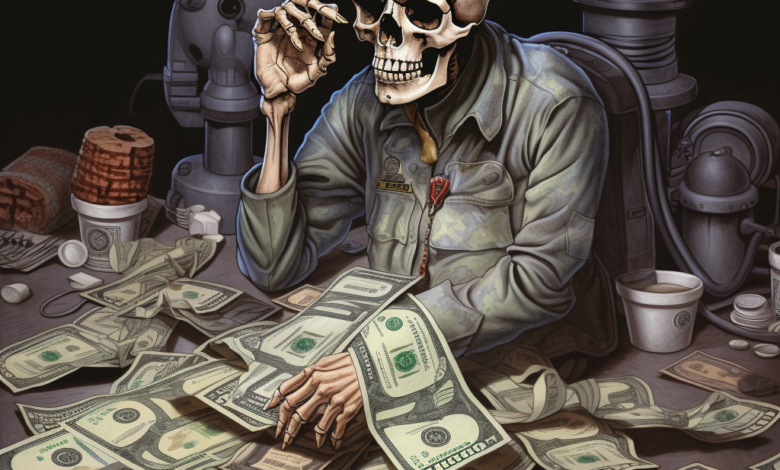Middle-Class Americans Struggle with Mounting Medical Debt: A Closer Look

Medical debt has emerged as a significant burden for middle-class Americans, casting a shadow over their financial well-being. A recent report by Third Way, a center-left think tank, reveals that in 2020, a startling 17 million individuals, constituting almost a quarter of middle-class Americans, carried unpaid healthcare bills. Surprisingly, this figure surpasses the proportions of both lower and higher-income groups.
The report, founded on data from the US Census Bureau, underscores that while the middle class often possesses more robust health insurance coverage compared to their lower-income counterparts, they confront unique financial challenges. Middle-class individuals are less prone to forgo medical care due to cost concerns, but simultaneously, they find themselves in a conundrum.
They are less likely to qualify for financial assistance and debt relief programs offered by certain hospitals, especially when compared to those with lower incomes. Additionally, the middle class faces a formidable obstacle – the struggle to amass disposable funds to meet high deductibles and out-of-pocket medical expenses. Despite being within the heart of the middle class, many individuals in this bracket grapple with medical debt that not only threatens their financial stability but also has broader implications. David Kendall, Senior Fellow for Health and Fiscal Policy at Third Way, underscores the multifaceted impact of medical debt, stating, “Medical debt hits families hard on many fronts. It makes it hard to get health care. It overwhelms their budgets. It can prevent them from getting a mortgage and building intergenerational wealth, especially for Black families.”
The report reveals a concerning trend – Black and Hispanic middle-class Americans experience higher rates of unpaid healthcare bills compared to their White and Asian peers. Black, Hispanic, and Asian middle-class individuals grapple with medical debt at rates higher than their lower-income counterparts. The report finds that approximately 38% of Black middle-class individuals and just over 25% of Hispanic middle-class individuals have unpaid medical bills. In comparison, 20.4% of White and 16.6% of Asian middle-class individuals carry medical debt. Interestingly, educational attainment plays a role in shaping medical debt outcomes. Middle-class individuals who graduated from college encounter lower levels of medical debt compared to those who did not pursue or complete higher education.
While 16.5% of college graduates with at least a bachelor’s degree have unpaid medical bills, over a quarter of individuals with less education bear the burden of healthcare debt. The report also underscores the distinctive position of senior citizens in relation to medical debt. Despite higher healthcare costs associated with aging, senior citizens enjoy lower rates of medical debt due to the coverage provided by Medicare. Merely 14.4% of those aged 65 and above have unpaid medical bills, in stark contrast to more than a quarter of younger Americans.
The problem of medical debt is gaining traction in public discourse, leading to heightened awareness and regulatory action. Collaborative efforts by entities like the Consumer Financial Protection Bureau, the US Department of Health and Human Services, and the US Department of Treasury have propelled an investigation into medical credit cards and specialized financial products that contribute to high costs and debt burdens for patients. Notably, nearly $88 billion in medical bills feature on consumer credit reports, with the actual medical debt burden likely surpassing this estimate. In response, major credit reporting agencies Equifax, Experian, and TransUnion have taken steps to mitigate the impact of medical debt on consumers’ financial standing.
They have decided not to include medical debt that has gone to collections on credit reports after being settled, eliminating around 70% of debt from consumer records. Moreover, these agencies have extended the grace period for unpaid medical collection debt to one year, providing individuals more time to collaborate with health insurers and providers to address outstanding bills. Additionally, starting this year, medical collection debt below $500 will no longer appear on credit reports, as announced by the credit reporting agencies.
As the nation grapples with the weight of medical debt, these actions bring a glimmer of hope to middle-class Americans who have long been ensnared by its far-reaching consequences.





